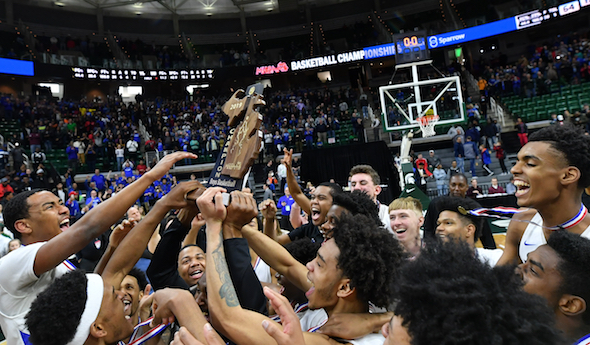
Lincoln Beats Buzzer for 1st Basketball Title
By
Paul Costanzo
Special for MHSAA.com
March 16, 2019
EAST LANSING – All eyes were on Ypsilanti Lincoln freshman Emoni Bates on Saturday as the seconds ticked away in the Division 1 Boys Basketball Final.
None were on Lincoln senior Jalen Fisher. But that all changed when the buzzer sounded.
Fisher’s rebound and jumper as time expired gave the Railsplitters their first MHSAA boys hoops title with a 64-62 victory over U-D Jesuit at the Breslin Center.
"At the beginning of this game, I just told (Fisher) to be patient, your time is coming man, be patient,” Lincoln coach Jesse Davis said. “During the timeouts I said, ‘Jalen be patient, your time is coming.’ I didn’t know it was going to come like that, but I’m glad it happened to him, because I believed in him the whole time.”
The last-second shot was the first to win a championship game featuring the state’s largest schools – formerly Class A, now Division 1 – since Lansing Sexton defeated Hamtramck in overtime in Class A in 1959.
Fisher’s shot ended a dramatic final quarter, which saw Lincoln (23-4) rally from a nine-point deficit. The Railsplitters took possession of the ball in a tie game with 1 minute, 20 seconds remaining, and drained the clock to set up a final shot.
That shot was supposed to be for Bates – considered the top freshman in the country – who gathered the ball in the backcourt but was immediately doubled as he came across half court.
“We trapped him, trying to get the ball out of his hands,” U-D Jesuit coach Pat Donnelly said. “I thought they got a decent, a clean look up top, but it was forced way out. That was what we talked about going in, that we were going to double (Bates) if he caught the ball.”
Bates passed out of the double team to senior teammate Amari Frye, who launched a 3-pointer from the top of the arc. He thought it was good – he remarked he thinks every shot he takes is good – and so did Fisher, but it hit the side of the iron and caromed to a wide open Fisher who capitalized with the game-winner.
“I thought it was good, but it hit the top of the rim and came in my hands, so I just shot it and it was good,” Fisher said. “I just shot it, and when it went in, I just saw black. Then I saw people on top of me. It was a good feeling though.”
Fisher, who played all 32 minutes and finished with 16 points, fell immediately to his back after hitting the shot and was mobbed by his teammates near the Lincoln bench.
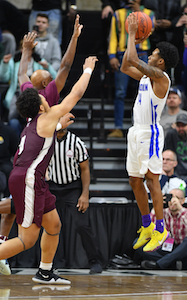 “I talk to my kids about living in the moment, and this was a moment that nobody saw coming but us,” Davis said. “I just think it’s great to have some kids you can take and you start with them when they’re freshman – Amari, Tahj (Chatman), Jalen came when he was a junior – but I’ve been instilling a championship mentality in Tahj and Amari for four years. Then we add somebody like Jalen with exceptional speed, toughness and a will to win, then you add somebody like Emoni Bates who can carry us through tough games and make big shots, and do everything the other guys couldn’t do. It just came out so beautiful, man.”
“I talk to my kids about living in the moment, and this was a moment that nobody saw coming but us,” Davis said. “I just think it’s great to have some kids you can take and you start with them when they’re freshman – Amari, Tahj (Chatman), Jalen came when he was a junior – but I’ve been instilling a championship mentality in Tahj and Amari for four years. Then we add somebody like Jalen with exceptional speed, toughness and a will to win, then you add somebody like Emoni Bates who can carry us through tough games and make big shots, and do everything the other guys couldn’t do. It just came out so beautiful, man.”
The Cubs (25-3) led for most of the game and nearly all of the second half after taking an 11-point lead into halftime. Daniel Friday scored 19 points, while Julian Dozier added 18 and six assists to put their team in control and up 60-51 with five minutes to play.
But Lincoln fought back and went on an 11-0 run, taking a 62-60 lead on a Frye layup with 1:38 remaining. Dozier responded immediately with a layup of his own to tie the game, but the Cubs wouldn’t see the ball again in the final 1:20.
“We’re the same kind of team as them; we score points in bunches,” Davis said. “We can get on a run and score. We’re capable of making runs just like them, so I keep telling my team, ‘Hey, keep doing what we do, keep applying pressure on both ends, and some shots will go down for us.’”
Bates scored in spurts himself, finishing with a game-high 23 points despite not having his best shooting night (7-of-22 from the floor and 1-of-7 from 3-point range). He was 8-of-8 from the free-throw line, however.
The Cubs played Friday on Bates for much of the game. Friday was giving up five inches to the 6-foot-9 Bates, but had a 45-pound weight advantage. Jordan Montgomery, who was giving up more than a foot in height, also countered with strength.
“(The U-D Jesuit defense) was good, but I just wasn’t making shots today,” Bates said. “I was getting to my spots, but my shot just wasn’t falling.”
Bates also had six rebounds and three blocks for the Railsplitters, while Frye finished with 15 points.
Montgomery added nine points, all on 3-pointers, for the Cubs, while University of Massachusetts-bound senior Jalen Thomas had six points and seven rebounds.
“I want to congratulate Ypsilanti Lincoln on a tremendously hard-fought victory – they're a good team,” Donnelly said. “Coming into this game we heard all this stuff about, ‘You have to stop Emoni, stop Emoni,’ but we were a lot more concerned with more than Emoni. They have some good players out there.”
PHOTOS: (Top) Ypsilanti Lincoln celebrates its first MHSAA boys basketball championship Saturday at the Breslin Center. (Middle) Jalen Fisher launches the game-winning shot as the final seconds tick off the clock in the Division 1 Final.
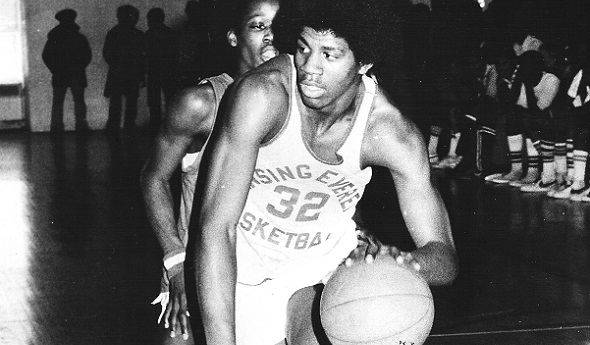
'Retro' Award Rewards 1st Hoops Legends
January 4, 2017
By Ron Pesch
Special for Second Half
Before the start of the MHSAA’s 2009 Boys Basketball finals, Basketball Coaches Association of Michigan director Tom Hursey stopped by my seat at Michigan State University’s Breslin Center to say hello.
Our chat would alter a decade of my Michigan winters.
Somewhere between hello and goodbye, our chat included conversation on one of my favorite BCAM ventures. In 1981, the Michigan High School Basketball Coaches Association, as BCAM was once known, named its first “Mr. Basketball.” I was two years out of high school when Lansing Eastern’s Sam Vincent edged Eric Turner of Flint Central for that first award. Designed to honor the state’s top senior, the award was named in honor of Detroit Free Press writer Hal Schram. “The Swami,” as he was nicknamed, Schram began covering high school sports for the newspaper in 1945.
The 2009 selection was 6-foot-9 Derrick Nix of Detroit Pershing. I mentioned my affinity for the Mr. Basketball program to Tom, but stated that I always thought it a crime that the award didn’t start years earlier, at least when Michigan hoop fans became infatuated with a kid nicknamed “Magic.”
Earvin Johnson prepped at Lansing Everett and was the talk of the state in basketball circles before becoming a household name during his time at Michigan State and with the Los Angeles Lakers. Earlier this year, ESPN named Johnson the greatest point guard to ever play the game. Tom noted that “Magic” was really the inspiration for the “Mr. Basketball” award.
Then I posed a question to Tom.
What about creating a “new” award, designed to honor those greats from the past?
As my hobby of researching the history of high school sports in Michigan and beyond had grown over the years, I’d found the Great Lakes state had always produced shining stars on the basketball court. The crime was that the “Mr. Basketball” award hadn’t been launched many years before.
Harry Kipke, was perhaps the state’s first true basketball star. He won 12 varsity letters at Lansing Central and guided the basketball team to the semifinal round of the state tournament in 1920 as a senior, before heading to the University of Michigan where he earned letters in football, basketball and baseball. After stops at the University of Missouri and Michigan State, Kipke would serve as Michigan’s football coach, guiding the Wolverines to two national gridiron championships.
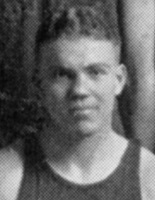 As a junior, the basketball antics of Grand Rapids Union’s Royal “Red” Cherry captured the state’s attention when he led Union to the state basketball championship. Considered the best all-around player of the tournament, Cherry led the team to a second consecutive title as a senior. He, too, attended Michigan, earning laurels on the basketball court and the baseball diamond.
As a junior, the basketball antics of Grand Rapids Union’s Royal “Red” Cherry captured the state’s attention when he led Union to the state basketball championship. Considered the best all-around player of the tournament, Cherry led the team to a second consecutive title as a senior. He, too, attended Michigan, earning laurels on the basketball court and the baseball diamond.
Many other legends of the hardcourt populated Michigan’s past: Saginaw’s Ernie Thompson; the Burton brothers, M.C. and Ed, of Muskegon Heights; Detroit Pershing’s Ralph Simpson and Spencer Haywood; Dave DeBusschere of Detroit Austin Catholic; Willie Betts and Blanche Martin of River Rouge; Ron Kramer of East Detroit; Benton Harbor’s Chet Walker and L.C. Bowen.
After a few weeks of research, discussion and thought, Tom agreed, and over the next several months the framework for the “Retro Mr. Basketball” project was developed
The idea was to try and mimic the current model. Only seniors, and their high school basketball careers, should be considered. While any “senior” player would be eligible, a ballot of the state’s elite would comprise the candidates for the award. Like their modern-day equivalents, where the events of life that would follow high school graduation had yet to occur, post-high school life would be disregarded as much as possible for “Retro” candidates.
Finally, the program would follow a 10-year arc, kicking off in the spring of 2010. This December marks my eighth year of research tied to the mission. Two more will follow.
Since the Schram “Mr. Basketball” award began in 1981, the “Retro” award would honor basketball players from the years 1920 through 1980. That first year, a ballot comprised of players from the years that ended in zero - 1920, 1930, 1940, 1950, 1960, 1970 and 1980 – was created. A senior for each year would be named the winner of the “Retro” award. That meant with the selection of “Mr. Basketball” and the six “Retro” winners for the years 1929, 1939, 1949, 1959, 1969 and 1979, scheduled for the spring of 2019, BCAM would be able to point to a combined list of Mr. Basketballs totaling 100 of the state’s finest.
To identify each year’s award winner, a committee of veteran BCAM members was formed to study a ballot of candidates and select a winner.
Technology, combined with scanning old-fashioned reels of microfilm, has helped with research of potential candidates. In those very early years, personal statistics were rarely kept. Rather, an assessment of a player’s skills, tied to the position he played, often served as a means to identify an area’s top athletes. Tournament play was often the only time an athlete’s abilities were on display to a larger audience. Scouring newspaper articles for all-tournament teams and yearbooks for additional details and years of study helped uncover the state’s top senior players. Understanding the game and its evolution was important. The center jump after each basket emphasized the importance of a tall, skilled center in those games played before the winter of 1938-39.
Beginning in 1935, all-state teams began to appear in state newspapers. Eventually, the Detroit Free Press, the Detroit Times, the Detroit News, The Associated Press and even United Press International became involved in identifying the state’s top basketball players and naming all-state squads. Much work is involved in parsing the 15,811 names (not including honorable mentions) found in those lists. When duplicates are removed, the names of 8,430 prep players remain spread over the 61 years that mark the “Retro” field of possible candidates.
Research to identify seniors, players named by multiple media outlets, and mini biographies are compiled for the top players. The field of candidates is then narrowed to 10 or fewer. Over state championship weekend, the ballots are brought to the BCAM committee for discussion, and finalists are named for each year. Finally, one player is named for each eligible season.
Like the modern day award, the selection may create some controversy. Some amazing ballplayers have landed on the finalist list, but were denied the Hal Schram Mr. Basketball award: Traverse City’s Dan Majerle, Roy Marble of Flint Beecher, Detroit Southwestern’s Jalen Rose, Detroit Northern’s Derrick Coleman and Draymond Green of Saginaw are among a few.
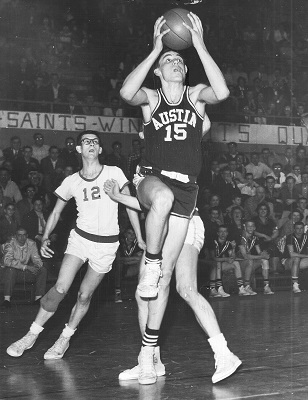 The same applies to the “Retro” list. Fennville’s Richie Jordan, Robert “Bubbles” Hawkins from Detroit Pershing, Dennis Bankey of Detroit St. Thomas, Bill Chmielewski of Detroit Redeemer, Highland Park’s Terry Duerod and Detroit Kettering’s Lindsay Hairston all have been honored on the finalist lists, but fell short of the top prize.
The same applies to the “Retro” list. Fennville’s Richie Jordan, Robert “Bubbles” Hawkins from Detroit Pershing, Dennis Bankey of Detroit St. Thomas, Bill Chmielewski of Detroit Redeemer, Highland Park’s Terry Duerod and Detroit Kettering’s Lindsay Hairston all have been honored on the finalist lists, but fell short of the top prize.
In many cases, Michigan was loaded with prep talent – it’s tough to name Roy Marble Mr. Basketball when Flint Northwestern’s Glen Rice was on the same ballot, or Rose the state’s best when Country Day’s Chris Webber was another candidate. While the “Fennville Flash” amazed the state with his eye-popping statistics in 1965, Bowen led Benton Harbor to back-to-back Class A titles. Named an all-state basketball player as a junior, Hairston grew an inch and improved his game as a senior, but Pontiac Central’s “Campy” Russell dominated headlines that season, and was the “Retro” Mr. Basketball selection for 1971.
In some cases, it’s a challenge to look at the final balloting results without judging selections based on future basketball success. That certainly is the case with 2008. That season, Michigan’s Mr. Basketball award went to 6-foot guard Brad Redford, who posted incredible back-to-back high school seasons at Frankenmuth. Runner-up to the award that year was Saginaw’s Green. Considering Green’s success in the NBA, that’s hard for many to believe.
While the debates may never be settled, the beauty of Schram and “Retro” Mr. Basketball balloting can be found in the argument. With those disputes, people recall, research and learn about Michigan’s incredible prep basketball past.
The remaining three years of the “Retro” project will include many more legends of Michigan High School basketball, including, among others, DeBusschere, Walker, Haywood and Simpson.
This season, that “Magic” kid will be one of the names among the mix. Forty years after high school graduation, will he earn the honor that eluded him in high school, only because the honor didn’t yet exist?
 Ron Pesch has taken an active role in researching the history of MHSAA events since 1985 and began writing for MHSAA Finals programs in 1986, adding additional features and "flashbacks" in 1992. He inherited the title of MHSAA historian from the late Dick Kishpaugh following the 1993-94 school year, and resides in Muskegon. Contact him at [email protected] with ideas for historical articles.
Ron Pesch has taken an active role in researching the history of MHSAA events since 1985 and began writing for MHSAA Finals programs in 1986, adding additional features and "flashbacks" in 1992. He inherited the title of MHSAA historian from the late Dick Kishpaugh following the 1993-94 school year, and resides in Muskegon. Contact him at [email protected] with ideas for historical articles.
PHOTOS: (Top) Lansing Everett’s Earvin Johnson drives around a defender during his celebrated high school career. (Middle) Grand Rapids Union’s Royal “Red” Cherry. (Below) Detroit Austin Catholic’s Dave DeBusschere drives to the hoop as an opponent gets in position to rebound. (Photos from MHSAA and Ron Pesch historical files.)

